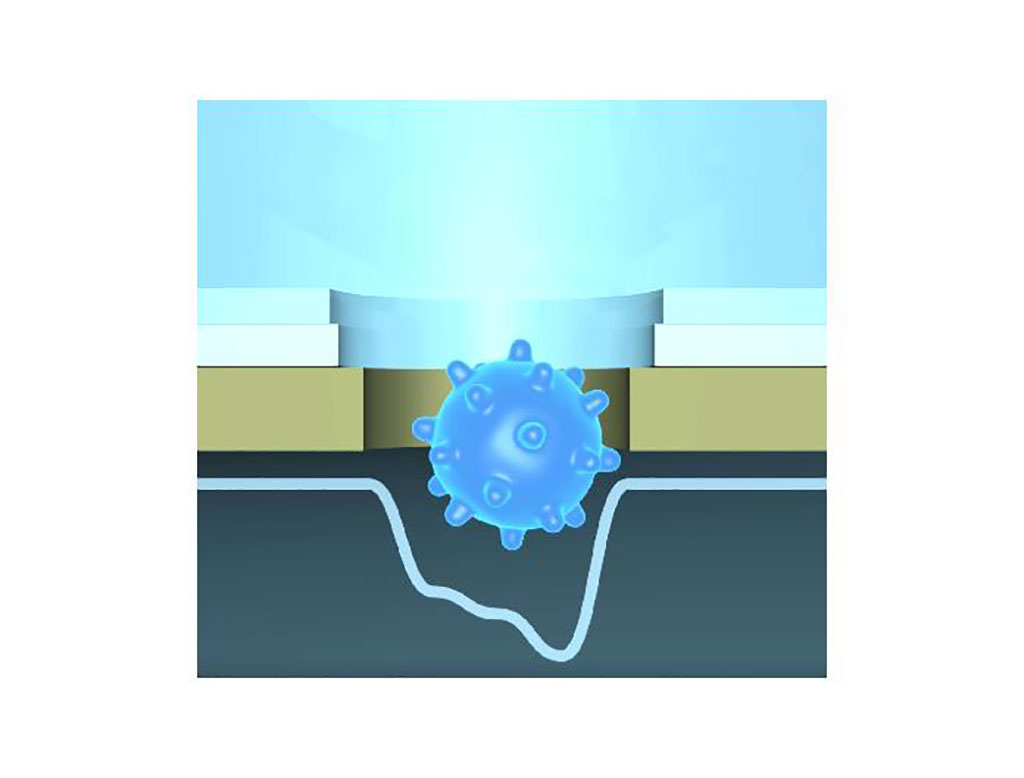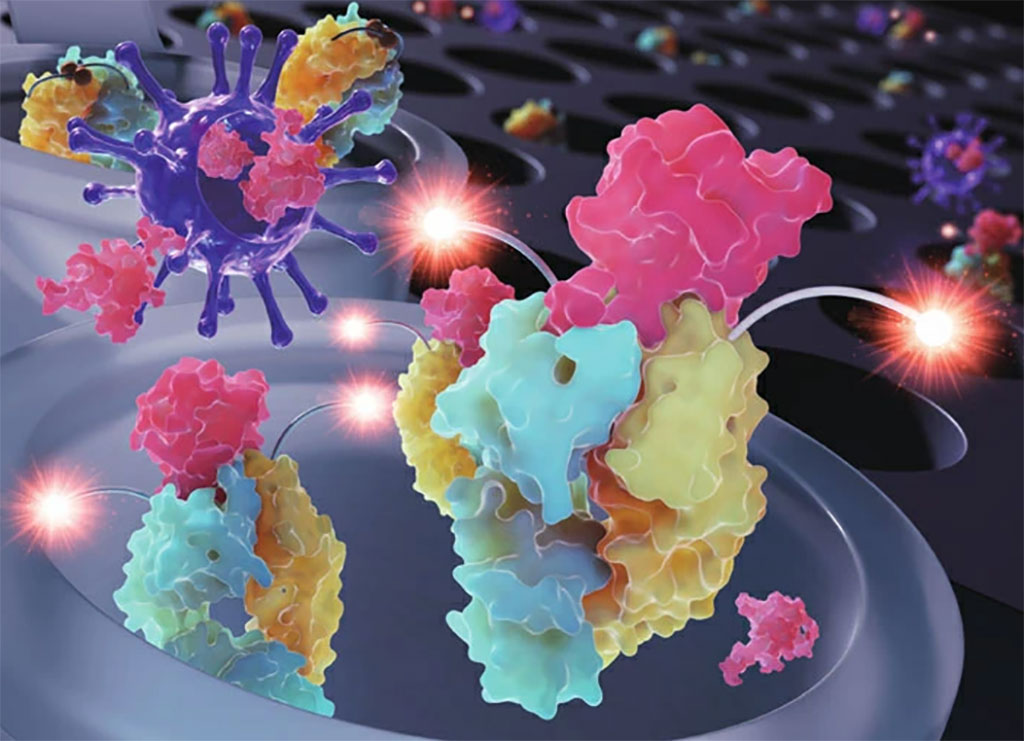New COVID-19 Test Combines AI and Nanopore Technology to Detect SARS-CoV-2 at POC in Five Minutes
By LabMedica International staff writers
Posted on 18 Jun 2021
Researchers have developed a new highly sensitive test for the SARS-CoV-2 virus that utilizes a fusion of artificial intelligence (AI) and nanopore technology which may enable rapid point-of-care testing for COVID-19.Posted on 18 Jun 2021
A team of scientists at Osaka University (Osaka, Japan) have demonstrated that single virus particles passing through a nanopore could be accurately identified using machine learning. The test platform they created was so sensitive that the coronaviruses responsible for the common cold, SARS, MERS, and COVID could be distinguished from each other. This work may lead to rapid, portable, and accurate screening tests for COVID and other viral diseases.

Image: Operating principle of artificial intelligence nanopore for coronavirus detection (Photo courtesy of Osaka University)
The global coronavirus pandemic has revealed the crucial need for rapid pathogen screening. However, the current gold-standard for detecting RNA viruses - including SARS-CoV-2, the virus that causes COVID - is reverse transcription-polymerase chain reaction (RT-PCR) testing. While accurate, this method is relatively slow, which hinders the timely interventions required to control an outbreak. Now, scientists led by Osaka University have developed an intelligent nanopore system that can be used for the detection of SARS-CoV-2 virus particles. Using machine-learning methods, the platform can accurately discriminate between similarly sized coronaviruses responsible for different respiratory diseases.
To fabricate the device, nanopores just 300 nanometers in diameter were bored into a silicon nitride membrane. When a virus was pulled through a nanopore by the electrophoretic force, the opening became partially blocked. This temporarily decreased the ionic flow inside the nanopore, which was detected as a change in the electrical current. The current as a function of time provided information on the volume, structure, and surface charge of the target being analyzed. However, to interpret the subtle signals, which could be as small as a few nanoamps, machine learning was needed. The team used 40 PCR-positive and 40 PCR-negative saliva samples to train the algorithm.
Using this platform, the researchers were able to achieve a sensitivity of 90% and a specificity of 96% for SARS-CoV-2 detection in just five minutes using clinical saliva samples. The complete test platform consists of machine learning software on a server, a portable high-precision current measuring instrument, and cost-effective semiconducting nanopore modules. By using a machine-learning method, the researchers expect that this system can be adapted for use in the detection of emerging infectious diseases in the future. The team hopes that this approach will revolutionize public health and disease control.
"Our innovative technology has high sensitivity and can even electrically identify single virus particles," said first author Professor Masateru Taniguchi. "We expect that this research will enable rapid point-of-care and screening tests for SARS-CoV-2 without the need for RNA extraction. A user-friendly and non-invasive method such as this is more amenable to immediate diagnosis in hospitals and screening in places where large crowds are gathered."
Related Links:
Osaka University













